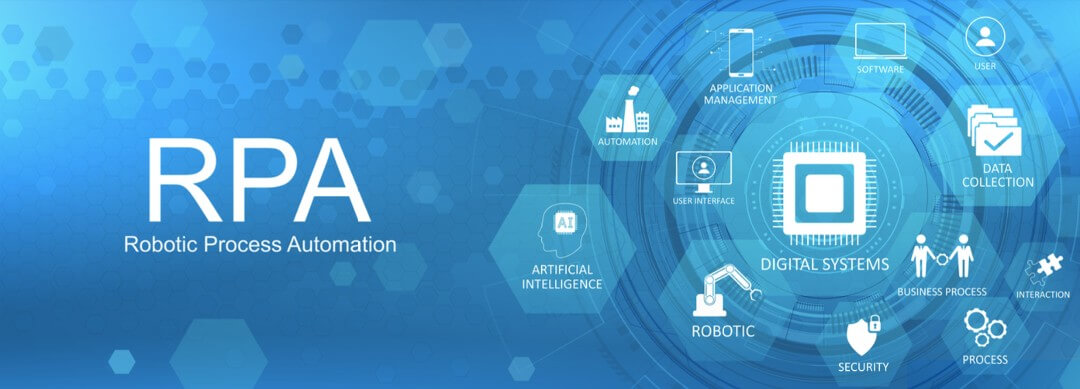Innovation and efficiency improvements are indispensable for success in today’s hyper-competitive economy. IT, being critical for both these objectives, is now a top priority at the C suite.
IT Becomes Integral to Core Operations
Today’s businesses cannot afford to sustain systems not offering positive ROI. Businesses break free of their opaque and costly Capital expenditure (CapEx) models by migrating to the cloud. The cloud offers a flexible and scalable Operational expenditure (OpEx) model, with the ability to pinpoint the resources consumed by each function or customer. In 2020, IT leaders will have to work closely with the operations team, to shepherd such migration. They have to do so with minimal disruption to business operations.
Data Harnessing to Become Intense
Insights from Big Data analytics is critical to enterprises seeking a competitive advantage. To facilitate Big Data, IT leaders strive to move their enterprises out of silo-based complacency. The sheer volumes of data force them to aggregate relevant data as opposed to aggregating all data that comes in through the course of business.
The investment in Big Data systems will continue to rise in 2020. The focus will be on digital marketing and engaging with customers in a customised way. Brands attaining digital marketing maturity enjoy 11% increase in revenue and a 17% increase in cost-efficiency, on an average. Attaining digital maturity requires using data to make every consumer interaction, cutting across touchpoints, a highly personal, relevant, and enriching experience.
Mainstreaming AI
Mainstreaming AI will be a priority in 2020. An increasing number of C-level execs is now taking up ownership of AI. However, key challenges continue to stifle rolling out AI-based solutions. IT leaders and professionals have their task cut out- overcoming such challenges!
IT major, Gartner predicts 80% of enterprise AI projects remaining struck, unable to scale-up. Talent remains in short supply. Top managers adopt a multi-pronged strategy to overcome the skill shortage. They train and nurture in-house talent, head-hunting for AI talent, and engage with AI partners in a big way.

Such initiatives allow IT leaders to roll out cutting-edge AI products and processes. Enterprises gain in internal efficiency, better customer satisfaction, and better product differentiation. As a case in point, Gartner estimates patients visiting the emergency department in the US to reduce by 20 Million from present levels, by 2023. The decrease is due to the enrollment of ill patients in AI-enhanced virtual care. The trend will be similar in APAC countries. More so in Singapore, where healthcare AI is making great strides.
The impact will be strong in other areas as well. Financial, legal, and other firms use AI-based systems for document mining, pattern recognition, fraud detection, and more. Customer-facing companies deploy AI-powered customer care bots.
Facial Recognition Will Gain Strength
One branch of AI all set to soar big time is facial recognition. In 2020, the technology will mature from present levels. The face will become as critical a biometric identity as the fingerprint. It may even become viable to replace passwords altogether, in favour of the face.
In 2020, IT managers and leaders would be busy integrating facial recognition. Recognising customers through their face unlocks big-time sales opportunities. Changi airport is already implementing facial recognition technology. The technology will make the boarding process more seamless and faster.
The Hardware Shift
The rapid changes in software push the impact of hardware changes out of the limelight. But the impact of hardware changes on the enterprise will be equally profound. By 2020, a few “antique” LED screens will still remain. But most enterprises will start deploying paper-thin OLED surfaces with touch capability. Surfaces such as walls, mirrors, and windows will soon become computable, unlocking opportunities. Better quality Augmented Reality glasses will unlock many possibilities related to spatial web and geolocation data.
The Rise of the Blockchain
Blockchain will make big strides in 2020. By 2022, about one billion people will have some data about them stored on a blockchain.

However, Gartner estimates 75% of public blockchains to suffer “privacy poisoning.” Unrestricted use of personal data will render the blockchain noncompliant with privacy laws. Enterprises run the risk of hefty fines for noncompliance with data privacy regulations. In the globalised 2020s, IT leaders will be preoccupied with changing their privacy regulations. They will strive for compliance with the EU’s GDPR and other regulatory compliance.
The HR Factor
Enterprises remaining oblivious to the HR impact of technological changes do so at their peril.
In the coming years, a key area of focus for IT leaders will be to reconcile how employees use social media in a work context. They would resort to AI, machine learning and other interventions to make non-intrusive monitoring. They would seek to channel workforce energy in the right way and avoid social media scandals. Gartner estimates 25% of enterprises will ask their employees to sign an affidavit to avoid cyberbullying, by 2023. Gartner also estimates 70% of such initiatives will fail. This is just a sample of the issues facing IT leaders in the coming year.
The Security Factor
IT leaders will also be on their toes to pre-empt social breaches. The proliferation of IoT-based networks and devices increase network security risk. The security ecosystem has not yet scaled up to match the speed and depth demanded by IoT networks. IT leaders have their task cut out, securing every endpoint and attack surface.
Overall, IT will grow in 2020, even if on a subdued note. Forrester Research estimates the tech market in APAC to enjoy a growth rate of 4% or more in 2019 and 2020. There is a risk of economic slowdown slashing the forecast by half. But many enterprises in APAC are still in the early stages of tech adoption and remain ready to invest in tech while the growth is good. Many firms in China, Australia, Japan, and South Korea, besides Singapore, consider tech as integral to their business. They keep investing in the latest IT systems, even during a downturn.











